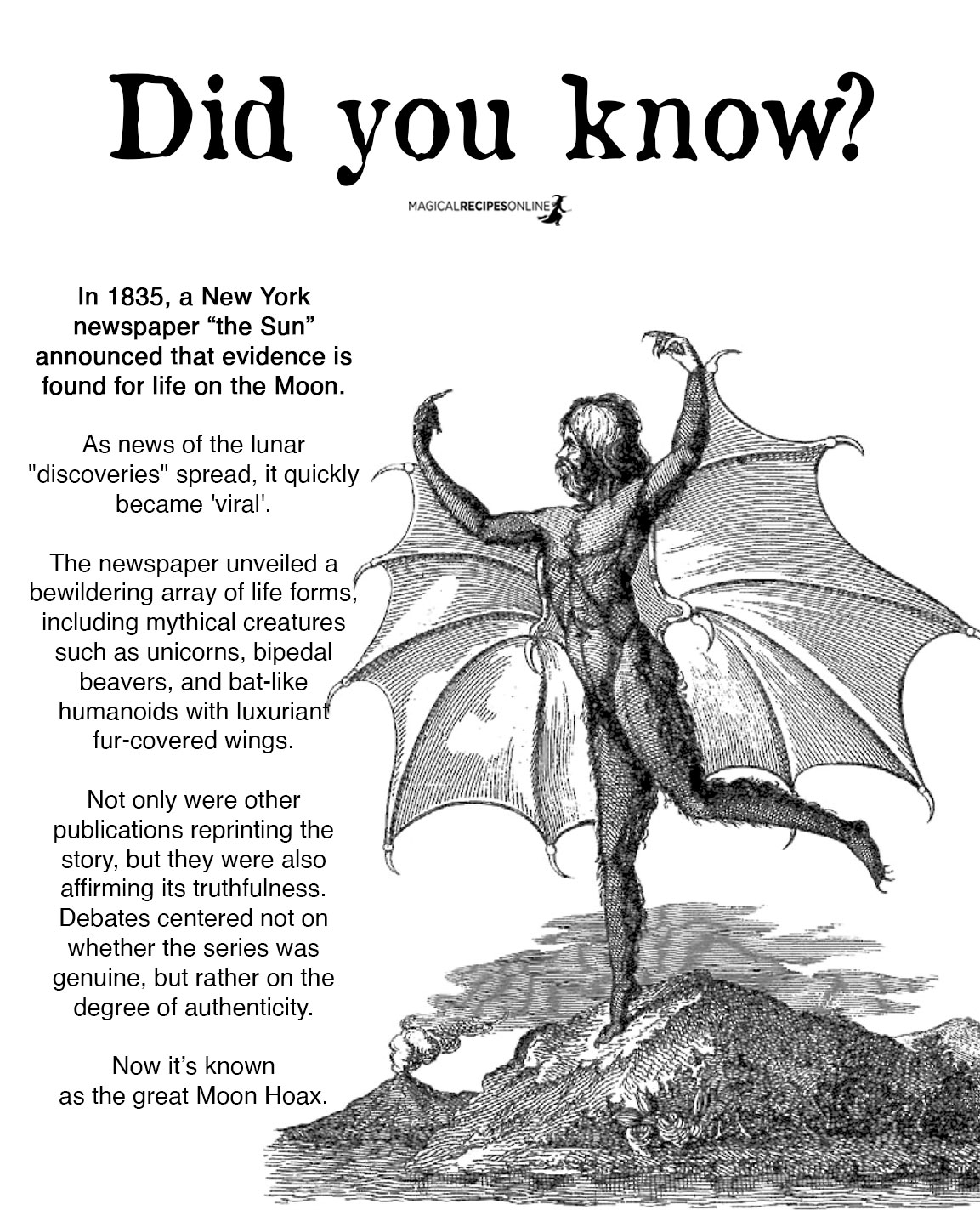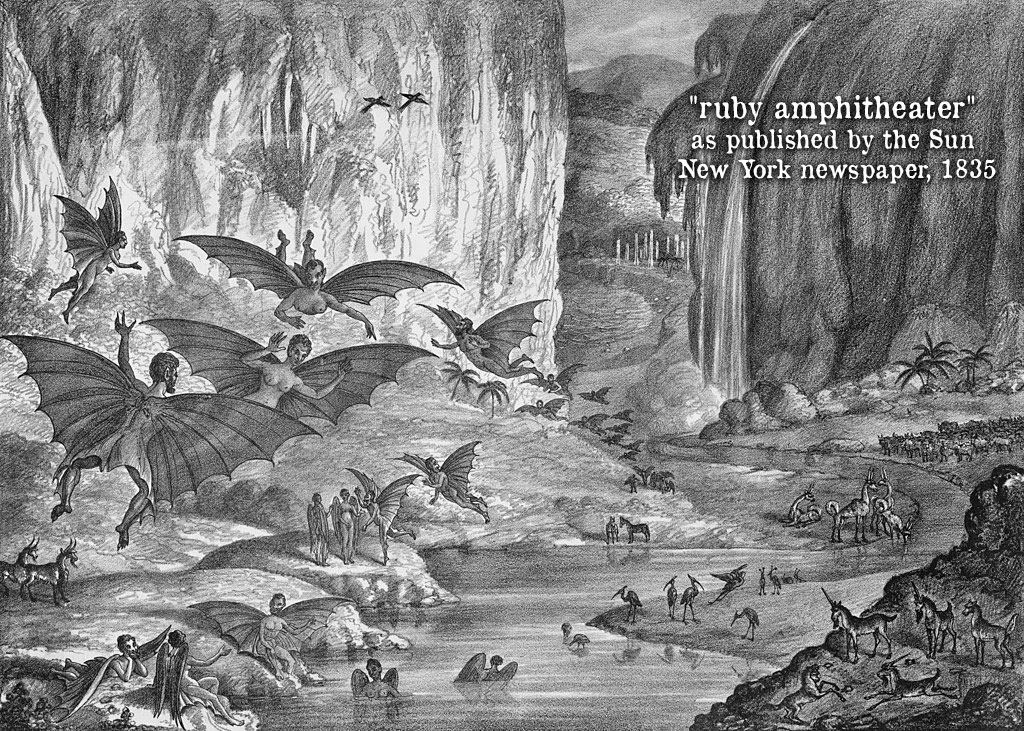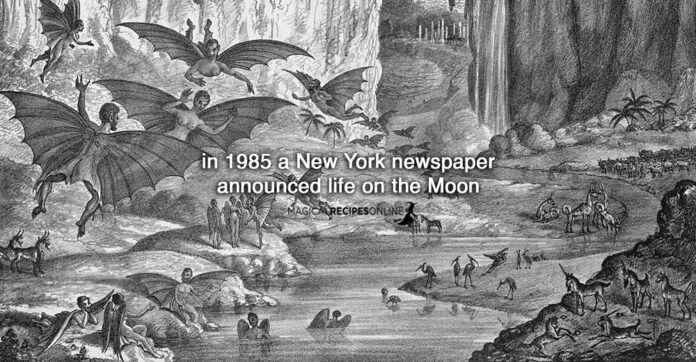Most people have forgotten that 1835 was marked by many people as the year we found life on the Moon. Wait, what? Well, on the 25th of August, in the year 1835, an extraordinary event unfolded within the pages of the renowned New York Sun newspaper. This remarkable series of articles captivated readers and unveiled an astounding ‘discovery’: the existence of life on the moon. As you can easily understand the News spread like wildfire. Why? Because of those who allegedly signed the articles. So, the origins of these articles were believed to be from the esteemed Edinburgh Journal of Science, accompanied by the byline of Dr. Andrew Grant, a purported associate of the esteemed astronomer Sir John Herschel.
The curious case of 1835’s “Life on the Moon”
Let’s take the story from the beginning. Sir John Herschel had embarked on a momentous expedition, journeying to Capetown, South Africa, in January 1834. There, he established an observatory equipped with a groundbreaking telescope. As Dr. Grant recounted in his articles, Herschel made extraordinary findings on the moon. He unveiled a bewildering array of life forms, including mythical creatures such as unicorns, bipedal beavers, and bat-like humanoids with luxuriant fur-covered wings. The articles also vividly depicted the moon’s landscape, featuring colossal craters, resplendent amethyst crystals, meandering rivers, and luxuriant vegetation of known and not-known plant species.

What was going on?
The New York Sun, a newspaper formed in 1833, embraced a narrative style of journalism, appealing to a broader readership through its affordable pricing. As soon as the first article of the Moon Hoax circulated, the newspaper experienced a surge in sales. It was probably a favorable year for space observation as Halley’s Comet was also predicted for 1835. Just imagine… Public was lusting for space news.
As news of the lunar “discoveries” spread, it quickly became ‘viral’. Not only were other publications reprinting the story, but they were also affirming its truthfulness. Debates centered not on whether the series was genuine, but rather on the degree of authenticity.
What happened there?
The narrative seemed too remarkable, too captivating to be disregarded. However, the falsity of the hoax concealed hints for those who cared to investigate. Later it was revealed that the esteemed Edinburgh Journal of Science, the source of the supposed findings, had ceased publication months before.

The tale was enthralling, igniting the imaginations of readers far and wide. However, unbeknownst to the enthralled audience, none of it was grounded in reality. The Edinburgh Journal of Science had ceased publication long before, and Dr. Andrew Grant was nothing more than a fictitious character. Instead, it is believed that Richard Adams Locke, a Sun journalist with a Cambridge University education, penned these riveting articles as a form of satire, aimed at ridiculing earlier speculations about extraterrestrial life.
Despite its satirical intent, the charming hoax managed to deceive readers, who failed to perceive it as such. Even a committee of esteemed scientists from Yale University fell victim to the ruse, journeying to New York in search of the elusive Edinburgh Journal articles. Mired in a game of deception orchestrated by Sun employees, who surreptitiously shuttled the scientists back and forth between various offices, the learned Yale researchers departed for New Haven none the wiser, entirely unaware of the elaborate prank that had been played on them.
The Sun finally confessed to the hoax on the 16th of September, 1835. Surprisingly, the public responded with good-humored amusement, and the newspaper’s sales remained unaffected. The Sun continued its operations until the year 1950 when it merged with the New York World-Telegram. This amalgamation itself endured until 1967. A subsequent incarnation of the New York Sun emerged in 2002, but it bore no connection to its illustrious predecessor.

